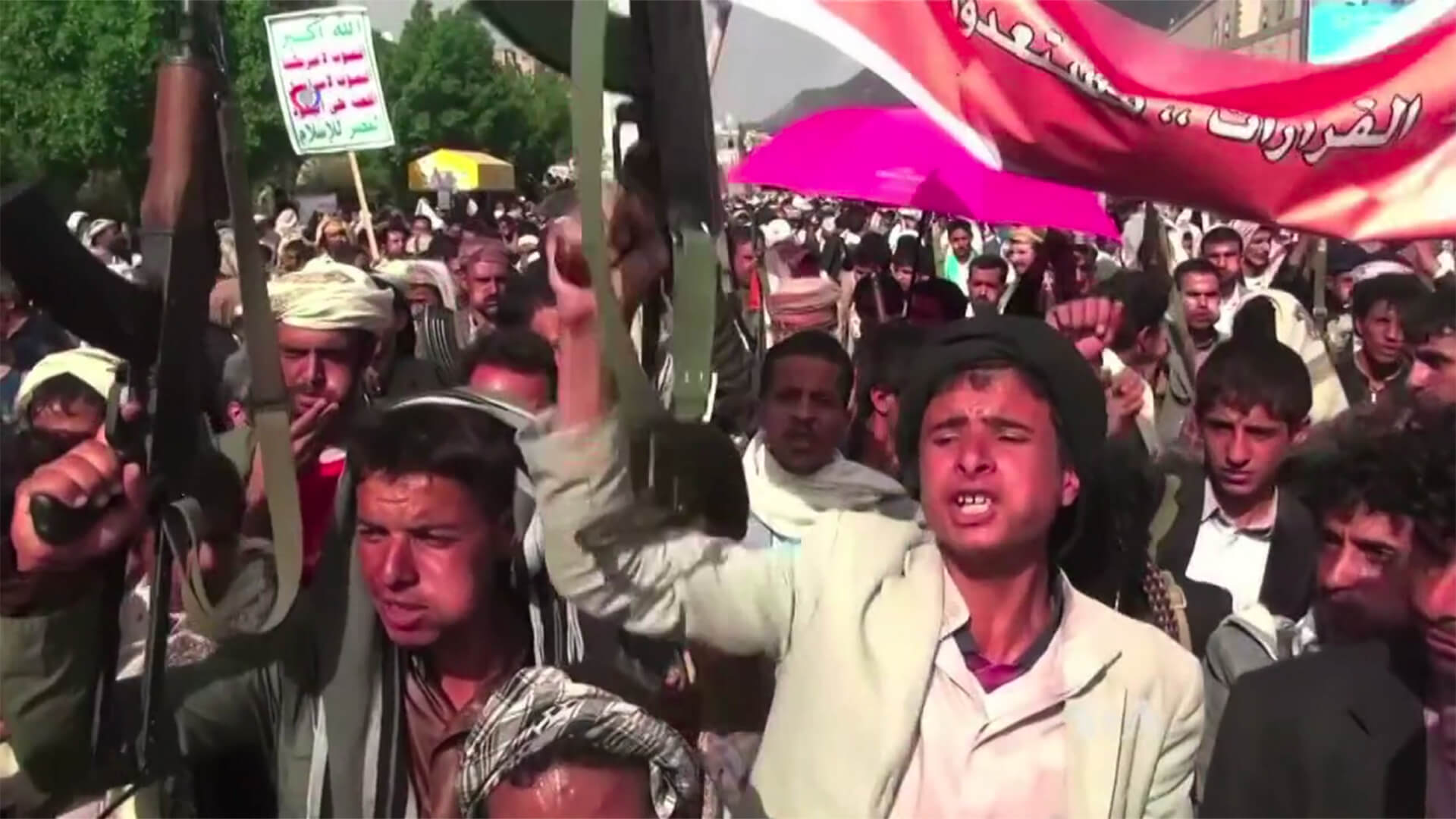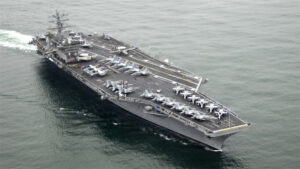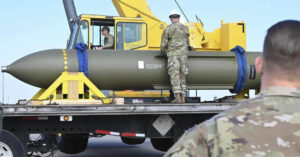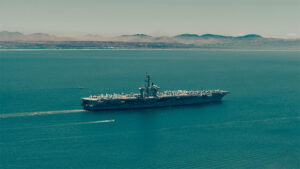Things in the Red Sea have ramped up yet again. The Houthis, who are an Iranian-backed Shiite group in Yemen, launched a series of missile and drone attacks on international shipping. Early today, the United States conducted a retaliatory air assault on Houthi targets.
In response to an increase in assaults on commercial shipping and an anti-ship missile being launched toward US naval assets, the US targeted Houthi command and control systems, radar, and ammunition storage facilities. Only time will tell if the US is serious about getting involved in this region, and it will likely depend on Iran’s willingness to engage in discussion with the Biden Administration.
Everything about this region is complex (and I have very little desire to dive too deep), so we’ll leave it at “complex.” In all likelihood, we’ll see Iran push the Houthis away from a conflict with the US in favor of directing any assets toward their regional rival, Saudi Arabia.
Here at Zeihan On Geopolitics we select a single charity to sponsor. We have two criteria:
First, we look across the world and use our skill sets to identify where the needs are most acute. Second, we look for an institution with preexisting networks for both materials gathering and aid distribution. That way we know every cent of our donation is not simply going directly to where help is needed most, but our donations serve as a force multiplier for a system already in existence. Then we give what we can.
Today, our chosen charity is a group called Medshare, which provides emergency medical services to communities in need, with a very heavy emphasis on locations facing acute crises. Medshare operates right in the thick of it. Until future notice, every cent we earn from every book we sell in every format through every retailer is going to Medshare’s Ukraine fund.
And then there’s you.
Our newsletters and videologues are not only free, they will always be free. We also will never share your contact information with anyone. All we ask is that if you find one of our releases in any way useful, that you make a donation to Medshare. Over one third of Ukraine’s pre-war population has either been forced from their homes, kidnapped and shipped to Russia, or is trying to survive in occupied lands. This is our way to help who we can. Please, join us.
TranscripT
Hey everyone. Peter Zeihan here coming to you from the Phoenix Airport today and talk about a part of the world that I really don’t care for at all. And that’s in Yemen. There’s been an insurgency going on in Yemen since, I don’t know, Paleolithic period, multiple sides. You’ve got a relatively secular ish government. You’ve got a Sunni militia that’s kind of an officially or semiofficial affiliated with Al Qaeda.
And then you’ve got a Shiite group called the Houthis that are wildly incompetent at most work and really can’t hold themselves together. There’s very little that’s worth fighting over that you have a little natural gas. But once this boiled up, I don’t know, 15, 20 years ago, everyone puzzlingly got out of that business. The water tables crashed. Most agricultural production isn’t even going to food.
It’s going to something like Qot, which is a mild narcotic. That’s kind of a very, very mild version of like cocaine and shrooms put together that most of the population is high on all the time. Really not a lot going on there that matters to anyone but the detailed depth you need to command in order to say anything.
Intelligence extreme. So it’s like that perfect mix of irrelevance and tedium that I just Treadwell avoid at all costs. Unfortunately, since the Gaza war got started, they’ve started to be cooking off missiles and drones at international shipping going through the Red Sea. Their position is on the eastern side of the bubble MANDEB, which is on the extreme southern southwestern tip of the Arabian Peninsula.
And they actually do have the ability to reach in there if they put their minds to it. Of course, they are incapable of making their own weapons. I mean, this is a place where sticks and stones are the highlight of the technology. So all the weapons are brought in from Iran. Who is specifically backing the Houthis in this multi-sided fight?
The Iranians like to do that because it’s on the far side of Saudi Arabia, who is the regional rival. And everyone’s while the Houthis are, let’s be honest here, every once while the Iranians use Houthi cover in order to launch some missiles and some drones into Saudi targets. For their part, the Saudis have not really taken the bait in the traditional sense.
I mean, yes, they have invaded, but really they’re just using everything in Yemen as target practice because they know there’s no way that they’ve got the military capacity to actually root out these groups. So they basically aim for the blue roof is what I like to call it, in anticipation of someday the Iranians actually driving down through Iraq and Kuwait to the Saudi oil fields.
Basically, the Saudis are preparing by getting their fighter pilots some target practice, which, you know, it’s not stupid, it’s just inhumane. Anyway, back in 2022, the Saudis and the Houthis signed a side that makes it sound so formal they agreed to a peace deal or ceasefire anyway. And since then, the Houthis with the Iranians have been stockpiling weapons in anticipation of the next outbreak of hostilities.
Well, and the aftermath of the October 17th assault on Israeli targets by Hamas, we now have this war in Gaza. And the Houthis are saying that they’re cooking off missiles and attacking shipping that is affiliated with Israel and by affiliated Israel. What they really mean is anything that happens to go by because they don’t really have a good way to identify anything.
So they’ve just been shooting whatever they see. Well, local time in the middle of the night on January 12, the United States launched a moderate sized air assault using some Tomahawks and some fighter bombers on who the targets saying that they were targeting a few command and control systems, a little bit of radar and mostly the ammo dumps and processing facilities where the Houthis launch these things from.
Now, this is a fairly big chunk of territory. This isn’t like the tiny little pipsqueak of territory that Gaza is. This is actually, you know, something almost size Colorado. I think I’ll get back to you on that one. So clearing out the Houthies is definitely not an option without a Iraq style invasion, and that is not in the cards.
The question, of course, is how serious is the Biden administration about this? We’ve seen 12% of global trade get disrupted by these drone and missile assaults. So they’d have to put their back into it if the United States really wanted to stop this. It’s not clear that that’s the goal. And in fact, I’m fairly certain it’s not. You see, there was a precipitating event earlier in the day before the strikes.
The amount of assaults on the commercial shipping have been incrementally increasing. But what was different about the 12th is that a ballistic anti-ship missile was launched to U.S. naval assets and within hours, the United States shot back. It’s not that the United States is overly concerned about shipping, despite the PR, but you shoot at a Navy vessel if you vessel will return fire.
So I’m sure the message is being delivered quietly to the Iranians right now is like, you know, you do what you feel you need to. Just know that if you target us again, this is going to be a lot more involved. And it’s not just going to be the Houthis that are getting shot back at. Remember that every drop of oil that Iran exports goes to the Strait of Hormuz and everyone likes to make an unknown about the possibility of Iran closing the strait.
But they actually need it more than most of the other producers in the region. Will that be enough? I mean, time will tell, but there’s reason to be at least partially optimistic because something similar happened back in 2016 when the Houthis targeted an American naval asset and a lot of their stuff got blown up within the next couple of days.
And there haven’t been threats against U.S. naval assets since until today. So there’s some capability here for this to be smoothed out, but ultimately comes down to whether or not the Iranians are willing to actually have a conversation with the Biden administration about anything. Now, the Iranians do have a stronger support relationship with the Houthis than they do with, say, Hamas.
Hamas is Sunni and Arab, whereas the Iranians are largely Persian and Shia. So the Iranians have always seen Hamas as completely disposable. They don’t really care about it. They’re happy with what’s going on in the Israel Hamas war in Gaza, but they’re not going to intervene in any meaningful way to protect something that they don’t even consider to be an asset.
Who these little bit different? They are Shia. And so there’s a little bit more camaraderie and like needling Israel, which is, you know, convenient and fun and good for PR in Iran and around the Arab world, maybe only in Saudi Arabia. Their primary regional foe is a much more strategically important thing. So there’s leverage on both sides here.
But ultimately, the Iranians would love to keep the Houthis focused on Saudi Arabia because that’s where the money is and that’s where the future conflict for the Iranians ultimately will be. And they would love for the United States to stick out of this. So they’ve been basically needling the United States and needling Israel because it’s good P.R. across the Middle East.
But I don’t think they’re really interested in bleeding for it, because their real fight requires every asset they have later on. So I would guess that we’re going to see things simmer down in Yemen and I can go back to ignoring it.








